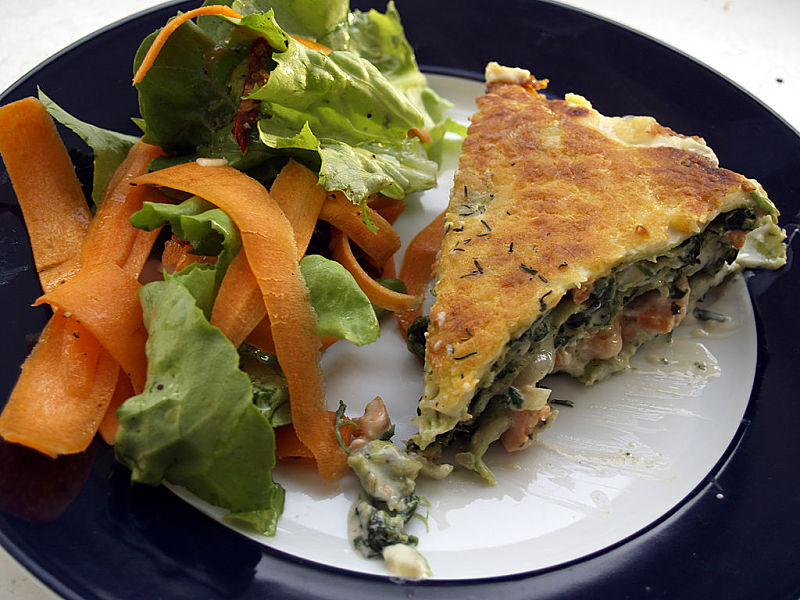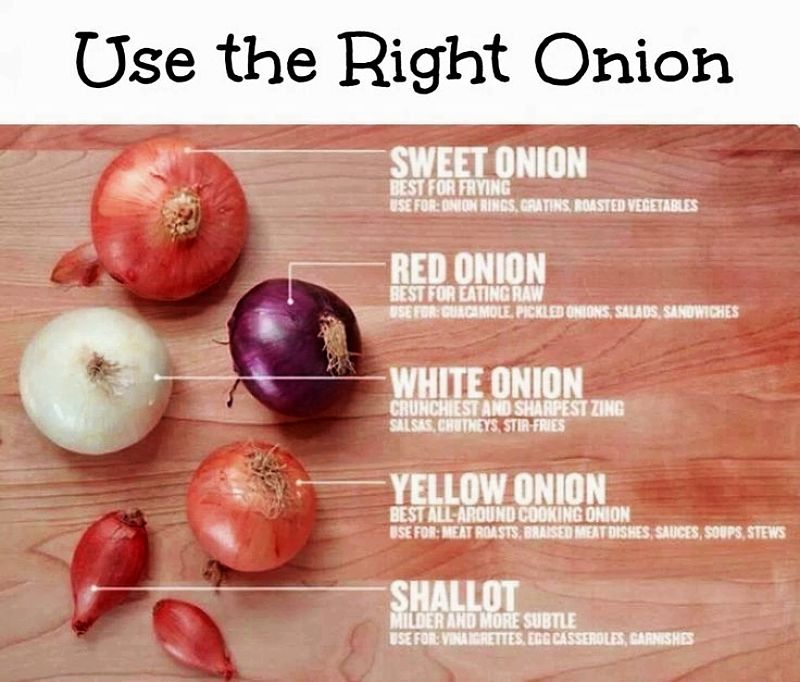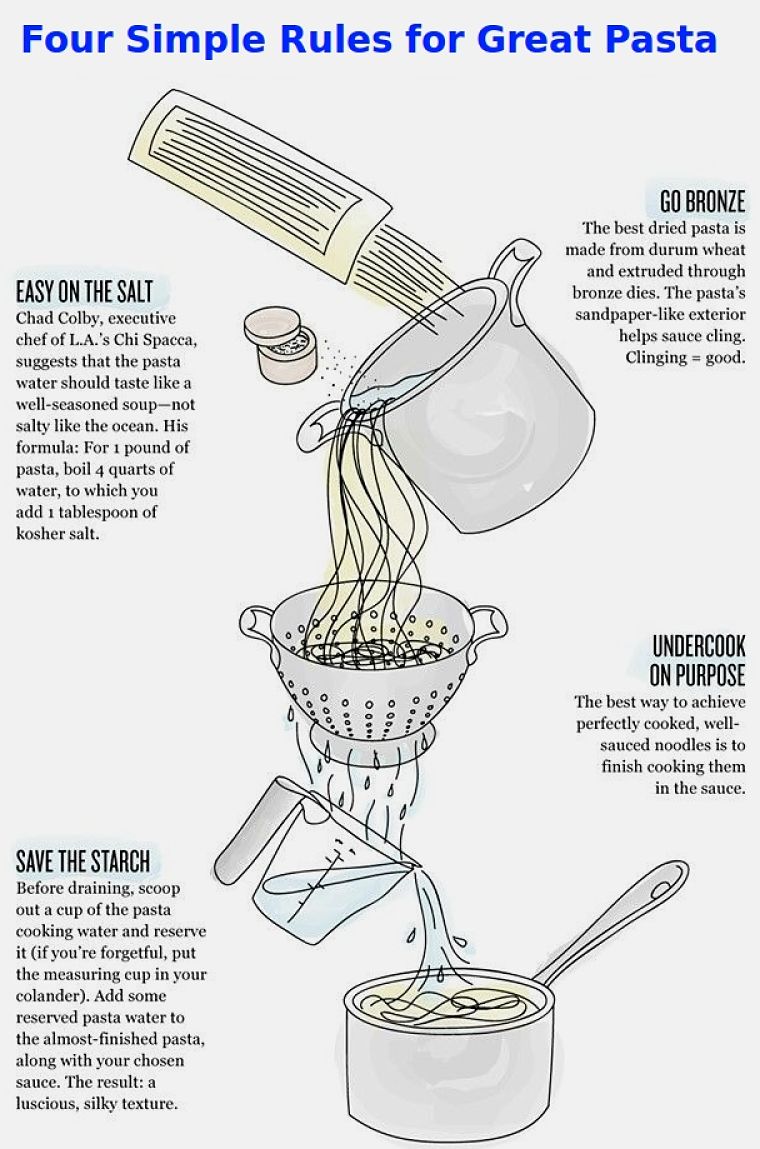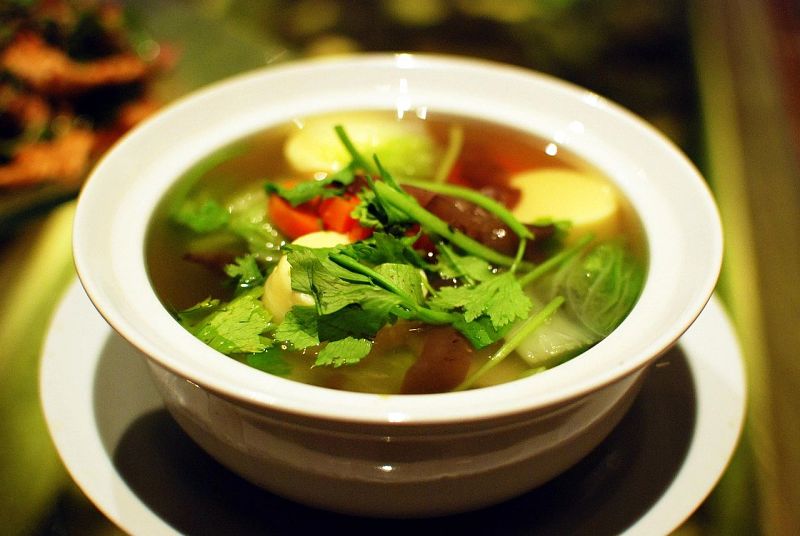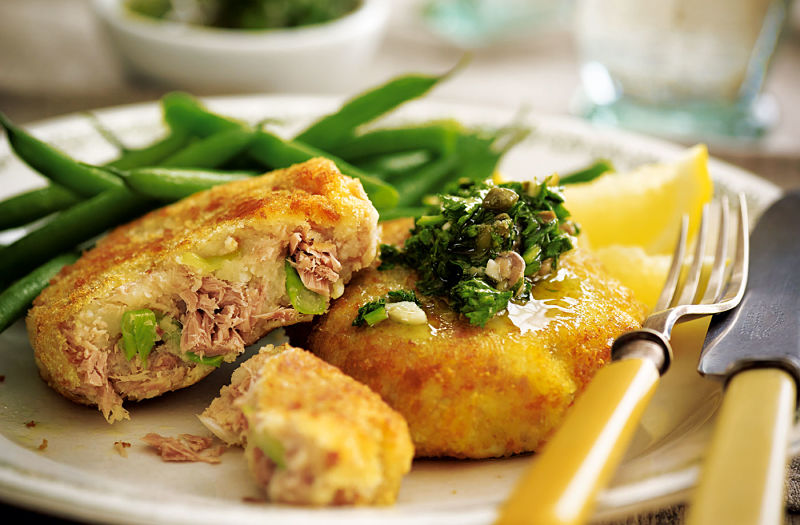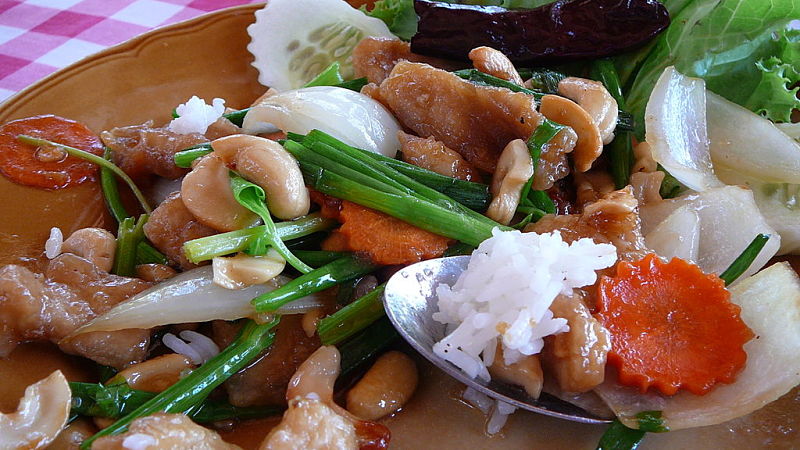Why Many Recipes Fail - Best Ever Cooking Tips and Secrets
How often have you followed every minute detail of a traditional recipe, only to have the dish turn to disaster pudding?
Why don't many recipes work? Who or what, did you blame - the author of the recipe, your stove or cooking equipment, your lack of experience with the recipe of style of cooking. Or did you, the cook, put too much faith in the instructions outlined n the recipe?
The truth is that the last reason is probably the most common cause. Recipes were never designed to tell you every minute detail, like an instruction manual for a pilot.
There is so much reading between the lines, assumptions and interpretation involved is using a recipe, even a good one. It's a bit like assembling flat-pack furniture - the instructions are always very limited and assume a lot of prior knowledge - the outcome is similar - frustration anger and disbelief.
It is always true of many things you do for the first time - it mostly doesn't work and it is always the better the next time. So the simple message here is never try a recipe for the first time when preparing food to a dinner party! So why do things go wrong and what can you do about it?
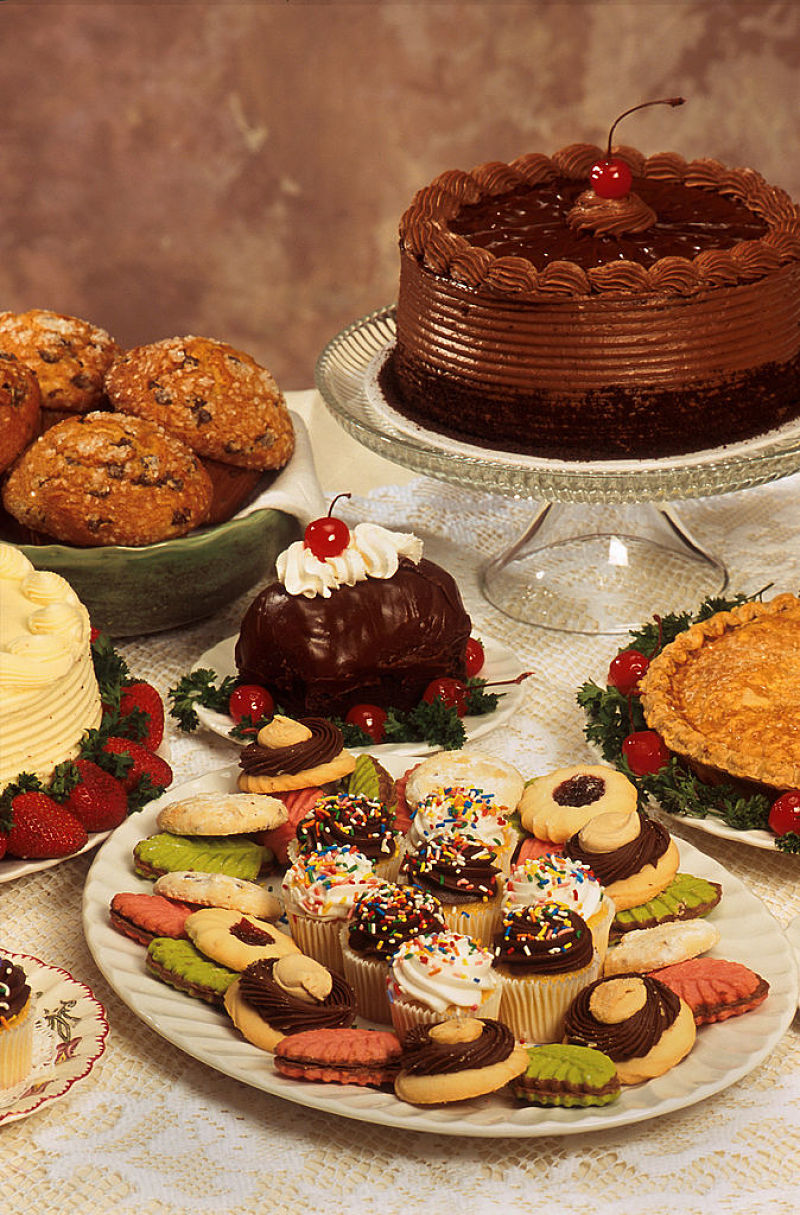
Unfortunately, every kitchen is different especially the oven and hot plates. Low, moderate and high are such coarse guides and even the temperate scale on the knobs are often very inaccurate. Similarly, there are fan-forced ovens and all sorts of ways in which the circulation in the oven varies and also the hotplates. Temperature dials can be very inaccurate and there can be many differences between electric, gas and induction ovens and hot plates. No recipe can give you a detailed set of instructions to cover all these variations.
There is simply no substitute for the experience and the know-how you get from cooking the dish several times and being an experienced user of recipes. In some ways recipes were never designed to be anything more than a general guide. Probably the most difficult thing is knowing when a dish is cooked to perfection. You certainly can't rely on the times in the recipes as there are so many things can alter the cooking process.
This includes the stove and hot plate, but it also includes the ingredients themselves and whether they were hot or cold when you mixed them. So how can you improved the odds that when you follow a recipe the dish will turn out to be perfect?
You Need Experience Cooking the Dish - Don't Expect it to be Right the First Time
Experienced cooks have a much better chance than inexperienced ones because they know how to fill in the 'gaps' and 'errors' in the recipes.
Some people advocate testing your oven by cooking a standard dish such as scones and using this to regularly adjust the cooking temperature of your oven by reducing recipe temperatures by 25 degrees F (10 degrees C), for example. If the recipe specifies baking at 325 degrees F (160 degrees C) in a conventional still oven, then reducing the temperature to 300 degrees F (150 degrees C) may be needed if baking in a modern convection oven (check your guide and the recipe to see whether it gives temperatures and time for various types of oven. Some people claim that dishes baked in a convection oven can cook about 25% faster than food cooked in a still oven, but this can vary a great deal from oven to oven.
You can find 'hot spots' in your oven by doing a 'bread test'. Place a row of bread slices to completely cover the middle rack of your oven. Bake at about 350 degree F (175 degrees C) for a few minutes, and see which slices go dark brown or start to get singed. The position of these slices marks your oven's hot spot. This will help you know where to position the dishes you are baking.
Even cooking a simple tomato sauce can lead to problems if you lack experience. The recipe told you to cook the chopped garlic over a medium heat for a few minutes. But garlic burns very easily and starts to brown within 45 seconds. You follow the instructions to simmer the sauce for the full 10 minutes, but is still very liquid, and in the mean time your pasta is ready and drained. You may have added extra large tomatoes or too much liquid, or not had the temperature high enough. During this process the experienced person cooking the dish makes various decisions. They will adjust temperatures and will know to watch the garlic so as not to burn it. They will know that simmering the sauce for an extra few minutes may be required to thicken it. The pasta can be allowed to cook and quickly reheated simply by running some hot water over it. A recipe cannot be precise and detailed enough to cover all these points. It can only give simply instructions such as "Fry the garlic gently, until it starts to release its aroma", or, "Simmer the tomato sauce until it thickens". The rest is 'reading between the lines' and this takes experience.
30 Common Reasons Why Recipes Fail
When a recipe doesn't work, what is the most common cause. It's the cook! Some make variations to ingredients without realising how critical some elements are. May not take enough care with the measurements. Listed below are 30 of the most frequent mistakes that people make.
1. Not Seasoning Food to Your Taste as its Being cooked
Every recipe need to be adapted or adjusted for your own tastes. You add more or less of a wide variety of seasoning ingredients: salt, pepper, ginger, herbs, garlic, spices, or wine to any recipe. Be careful when doing this as there is no going back! It is very easy to over-season your food! Always season and taste and season again, before you serve the dish.
2. Using Self-Rising Flour When Not Called For
Self-rising flour has baking powder AND salt already added to it. So mixing plain and self-raising flour can ruin a recipe and lead to 'disaster pudding'.
3. Substituting Low Fat or Non Fat Products for Regular Ones
Replacing low fat or non-fat products for regular products and whole milk or yogurt instead of low fat varieties can ruin the dish. Fat is necessary for the chemistry and processes in many recipes, not only so the dish will set and rise properly, but also for texture and flavor. If you want to cook with low fat products, find recipes that use these products and don't make substitutes.
4. Not Measuring Flour Correctly
Measuring flour is critical to baking recipes, but the instructions can be imprecise or you may not follow them properly or take shortcuts. Recipes that show weights are probably better as there are so many variations of cup sizes - heaps or flat etc. Take care to learn how to measure sugar, flour and liquid ingredients, then follow those rules with properly calibrated special purpose measuring cups and spoons. Many recipe books provide guides that define the measurements.
5. Mistaking Baking Soda for Baking Powder
Baking powder and baking soda are quite different. Baking powder actually contains baking soda, but has an acid added, usually cream of tartar. Baking soda needs acid in the food to react and make bubble of carbon dioxide and so the response can be quite different. Acidic ingredients include yogurt, buttermilk, chocolate or vinegar. Baking powder comes in various forms so it pays to check.
6. Using Yeast Past Expiration Date
Yeast is actually a living single-celled organism, and dried yeast can be activated when water is added. But both fresh and dried yeast have expiration dates and can 'go-off' when stored in your cupboard or fridge. So make sure your yeast is fresh and 'lively'. Also make sure that you follow the temperature instructions precisely. It its too hot you can kill the yeast. Generally the liquid temperature should not exceed 110 degrees F (38 degrees C).
7. Not Calibrating Your Oven
An oven with a reliable temperature throughout is important for success with recipes. You can make adjustments but its hard to do compensate. You can buy oven thermometers and meat thermometers. If your oven thermostat is inaccurate, it may be worthwhile getting it fixed by a qualified technician. You should also recognise that the amount by which cakes will rise will vary greatly and some are meant to be flat and rather dense.
8. Changing the Proportion of Ingredients
Baking recipes, particularly, are like a chemical reaction and the quantity of leavening agent and the moisture content are critical to the outcome. If you change the proportion of liquid to flour, or fat to flour, the recipe could fail (disaster pudding). Stick to the recipe and don't make changes to the main ingredients.
9. Not Understanding the Terms and Their Meanings
Recipes have terms and expressions which can easily be misunderstood. Terms such as sauté, fold, whip, blend, beat, and stir may mean different things to various people. Sometimes these terms are defined in a glossary, but there is nothing like experience as these processes are difficult to describe. Take time to learn what these expressions mean.
10. Not Reading the Whole Recipe First.
Many recipe writers may not get the exact sequence correctly or may miss something, which can really mess things up if you find out about it too late to fix it. Reading right through the recipe before you start will help you avoid these nasty surprises.
11. Substituting Ingredients
If the recipe calls for milk and you don't have any, using buttermilk or cream and water in the recipe may not work. Likewise for similar substitutes or variations. Even substituting full-fat yoghurt for non-fat varieties may not work. The same applies for kosher salt versus sea salt, or unsalted butter versus salted butter. If you know what you are doing many changes may work out, but its risky.
12. Not being Accurate Enough
The real problem is with flour which is more bulky when sifted. When measuring flour in a scoop or cup, don't pack it down hard into the measuring container like you may do with brown sugar. These differences can change the dish outcome. There are many other ways in which you can not measure the ingredients accurately. It pays to get a proper set of measuring cups and spoons.
13. Not Checking the Labels
Out of date ingredients can cause many problems and it always pays to read the labels. Many dried ingredients such as yeast will have instructions on how the product should be re-constituted and readied for adding to the dish.
14. Not Tasting as you go.
Despite following all the instructions the flavors or textures of a dish being cooked may be unbalance or not appealing. Adding even a tiny amount of salt or sugar can make a huge difference. The dish should taste right for you.
15. You Boil the Water when you should Only Simmer.
Simmering is a very slow boil with a bubble only breaking the surface every second or two. More vigorous bubbling means that the water is a boiling not just simmering. The difference is subtle but it can ruin some dishes. Vigorously boiling a beef stew can produce rubber like texture.
16. You Over-soften the Butter
Butter should be left to stand at room temperature for 30 to 40 minutes so it softens but does not melt. Butter that is too soft will not cream properly with the sugar when making cakes. This creaming is vital to ensure you bake light and fluffy cakes with a soft and delicate crumb.
17. You’re too Casual about Measuring and Using the Right Ingredients.
Despite what people believe the quality and quantity of the ingredients does matter. One cook's "cup of flour" may be equivalent to 1 1/4 cups measured by another person. Some people scoop out their flour, heaped in the container. Others scrape off the top (which is the right way). Others tap the container to pack it down or force it down with a fist. This will lead to too much flower. Flour should be lightly spooned or sifted into dry measuring cup, then leveled off a knife for most recipes.
18. You overcrowd the pan
Moisture in the form of steam escapes as food is being cooked. Overcrowding a pan, or using a pan that is too small for the dish will often mean the dish does not cook properly. When brown or sealing meat the crusty bits and brown bits are essential for flavor. It is best done in small batches. Overcrowding all the meat in the pan will not brown the meat properly.
19. You Mishandle the Egg Whites
Properly beaten egg whites are creamy, bulky and glossy, but they must be handled with care otherwise they won't beat properly. You must separate the whites from yolks very carefully, as even a tiny speck of yolk can stop the whites from whipping properly. It is a good idea to let the whites stand at right temperature before whipping as cold egg whites don't whip well. Always ensure everything is clean and dry and whip the egg whites at high speed until stiff peaks just start to form.
20. You Turn the Food too Often
Learning to stop flipping the food over too often is one of the most difficult lessons to learn and get used to when cooking. Food such as grilled, or fried steak or chicken won't develop a nice brown, outer crust unless you allow it to cook. Many people recommend that you should only turn a steak over once when cooking it on the barbecue or grill. A related problem is that you don’t get the pan hot enough before adding the food. Let the cooking surface get hot and then leave it for a few extra minutes until its really hot.
21. You Under Bake Breads, Cookies and Cakes
Inexperienced cooks often undercook baked items. Even if skewer or knife comes out clean, when you test for doneness, the cake may not be ready. If the cake is still pale in color, the cake may be cooked, but not finished properly and the cooking is unfinished. Allow the cake to cook for an extra few minutes until it has an even, golden brown color. It will seldom be over cooked.
22. You Don’t use a Meat Thermometer.
Meat thermometers are small, quite inexpensive, and widely available and are an essential item in any kitchen. It takes all the guesswork out of knowing when meat is cooked just the way you want it. Thermometers don’t lie, but appearances can deceive, especially for the inside of a large piece of meat. There is also a safety issues with under-cooked poultry.
23. You Overwork the Dough, especially low-fat Dough
Recipes with lots of butter or oil can over kneaded a little without much effect. But when you make a low-fat dough keeping the kneading to a minimum is very important. Some cooks also recommend that you spread the dough out by gentle pushing and prodding it rather than rolling over and over again. Gentle kneading keep the item lighter when cooked.
24. You don’t Cool Vegetables when Cooked to Stop the Cooking Process.
Cooking broccoli, green beans, asparagus or other green vegetables in boiling water for 3-7 minutes or steaming them leaves them bright green, tender and crisp - just perfect. But if you don’t “shock” these green vegetables by plunging them into ice water (or gently rinsing them under a little cold running water, they will continue to cook while hot and become flabby and horrible.
25. You put all the Salt in the Breading or Marinade
Too much salt tends to stop the marinade working a it won't penetrate the chicken, steak, pork or fish that you are preparing. It is much better to only use a small amount of salt in the marinade, and then sprinkle some salt onto the meat after removing it from the marinade. The same applies to breading.
26. You place meat straight from the fridge onto the grill or into the oven.
Meats will cook much netter and more evenly right through if you allow the pieces of meat to stand at room temperature for 15 - 30 minutes. This stops the interior of the meat being uncooked when the outside looks done.
27. You Use Poor Quality Ingredients.
Good food and lovely dishes starts and finishes with the quality of the ingredients. Mediocre ingredients won't produce good dishes - the best you can achieve is mediocre. If you are going to commit your time and effort to cooking always start with good quality ingredients. It will make the job easier and the outcome much more rewarding.
28. Your Mashed Potatoes are Gluey
Poor quality mashed potatoes generally are caused by overcooked the potatoes or not drying them properly. The heart of the problem is often that you have used the wrong type of potato. Certain types are ideal for boiling and mashing, others are not, s choose your potatoes carefully.
29. You Burn the Butter
Lightly browning butter can impart a nutty, caramel flavor to the food without tasting fatty. Once the butter starts to brown, it can quickly become burnt. Watch it carefully and when the butter just starts to turn amber-brown, quickly remove the pan from the heat and add the other ingredients.
30. Your Salad Goes Limp
To keep your salad greens at their best, you have to take account of timing, volume, and temperature. Only add the dressing just before serving. Many professional chefs serve salads on chilled serving plates to ensure the greens stay crisp when served. Don't wash the lettuce until you're ready to use it. Watch the volume of dressing you use and don't drown the salad. Use a large bowl so the salad doesn't get over crowded.
